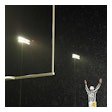Four steps for controlling fire ants on your playing fields.
Fire ants reportedly infest more than 260 million acres in nine southern states alone (Alabama, Arkansas, Florida, Georgia, Mississippi, Oklahoma, South Carolina, Tennessee and Texas), and they've been detected as far north as Washington, D.C., and as far west as California. Yet many facility operators outside of the South, where the 1/4-inch-long creatures with reddish-brown heads and blackish-brown ends arrived from South America in the early 1900s, may not be aware of the threat the insects pose. Their painful stings leave white pustules on skin and may cause allergic reactions.
Here's how to fight fire ants:
Know where to find them.
Fire ants are particularly prevalent on construction sites - either because they relocate from elsewhere on the property or they arrive on construction equipment, sod or other landscaping components. The insects build dome-like mounds that can span more than a foot in diameter and rise several inches above the ground's surface, and they are most common in areas with longer grass, such as beneath bleachers and near picnic tables. They've even been found in synthetic turf seams. If, however, the mounds are located in a remote area, where there is less potential for them to cause harm, consider just leaving them alone.
Determine the best way to control them.
Fire ants require different treatment methods than do other types of ants. That said, there are three primary ways to control them. Granular bait, which worker ants carry, takes the longest to work because the bait is only effective if it actually reaches the queen. Individual mound treatments (usually water-granular mixes) act faster but don't wipe out colonies. The most effective - and expensive - option is granular broadcast, which is applied like fertilizer. Commercial products and professional applications are available.
Keep an eye out for more.
All grounds-crew personnel must get in the habit of searching for fire ant mounds. They are easiest to see and treat in the spring and fall, when temperatures are moderate and worker ants actively scavenge for food. During the summer, mounds are less noticeable because they're deeper in the ground, where there is more moisture.
Call in a professional.
If all else fails, or you're not quite sure about the best way to eradicate fire ants, contact a pest professional or nearby college or university entomologist for assistance.
































